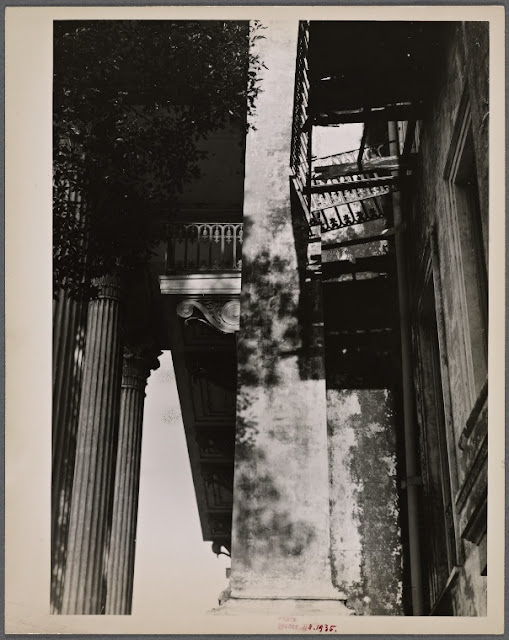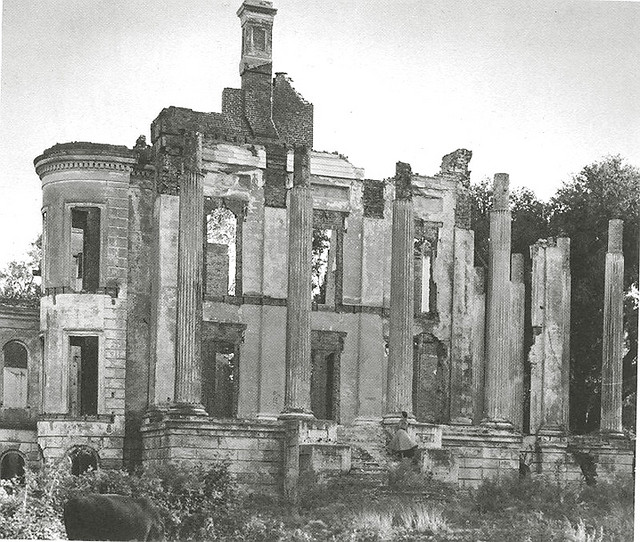I've never been able to love the South. If for no other reason than that I grew up in the sixties, and I clearly remember scenes of the Civil Rights Movement on television. Children turned away from segregated schools, police turning fire-hoses on peaceful protesters, the hateful faces of Southern whites. I was very young, and when my parents explained it to me, told me about the history of slavery and the change that African Americans were trying to effect in the South, I knew that the vicious resistance of Southern whites was wrong. I knew it was wrong. And, perhaps childishly, I've never been able to forgive the South, never been able to hear a soft Southern accent without a cringe.
Of course I understand that racial hatred in America has never been merely confined to the South. Our whole history has been steeped in racial hatred, in the submission and degradation of non-whites. But the smug Southern, bible-thumping, self-righteous racial prejudice I saw on the television, at such a young age, bred a mirror prejudice in me. Even though I can readily rationalize otherwise, even though I know it's wrong, even though I know my own prejudice has stayed put while the country has moved on, I'm not sure I'll ever entirely rid myself of the feeling that the South is a bad place.
Parallel to this, even as a lover of beauty and of excess, as a lover of buildings, still some part of me has always shunned a closer understanding and appreciation of the great architecture of the South. Specifically plantation architecture. It isn't something I've given much conscious thought to but, certainly, it must stem from my horror at the idea that all that richesse was only made possible because of slave labor. The idea that such beauty was created under that system, at that particular cost, makes me want to turn away from it. (But then how many of our great buildings were realized under those conditions, the White House most prominently.)
And yet... and yet.... Years ago, I came across a book called "Ghosts Along the Mississippi", by Clarence John Laughlin. Originally published in 1948, it was filled with images of lost or soon to be lost buildings of the Old South. (Some, happily, were later saved.) The title was apt, of course, as the photographs captured all the ghostly decomposition of those once brilliant structures. You could almost feel their shame at their present state - stripped, crumbling - collapsing with history and memory, as they closed in on themselves. But there was one, more than any of the others, that caught my imagination. One whose beautiful proportions and fine detail made its decay, its apparent loss, all the more distressing to me. I've never forgotten that beautiful house. Belle Grove.
***
The mansion at Belle Grove Plantation was one of the greatest, largest and most beautiful residences ever built in the South. Adapted from Wikipedia:
Belle Grove, also known as Belle Grove Plantation, was a
plantation and elaborate Greek Revival and Italianate-style plantation mansion
near White Castle in Iberville Parish, Louisiana. Completed in 1857, it was one
of the largest mansions ever built in the South, surpassing even that of the
neighboring Nottoway Plantation. The masonry structure stood 62 feet high and
measured 122 feet wide by 119 feet deep, with seventy-five rooms spread over
four floors.
Belle Grove was owned by John Andrews, a wealthy sugar
planter. Andrews owned over 7,000 acres spread over several plantations.
By the 1850s, his more than 150 slaves were producing over half a million
pounds of sugar each year. Andrews built the mansion from 1852 to 1857 at a cost of
$80,000, not including the free (slave) labor or the plentiful cypress lumber
and hand-made bricks produced on the plantation. The house was designed by New
Orleans architect Henry Howard.
Following the American Civil War and ensuing collapse of
the plantation economy, Andrews sold the home and plantation in 1867 to James
Ware, for the meager sum of $50,000. The Ware family continued to live and farm
the plantation until the early 1920s. After several bad crop years, they were
forced to sell the home. From 1925 onwards the house sat vacant.
The post-War era at Belle Grove saw the finely crafted
home rot away in Louisiana's harsh environment. Neglect allowed a leaky roof to
expand and destroy one wing of the mansion. Several owners purchased the home,
each with aspirations of restoration, but none had the means necessary in the
lean years of the Great Depression and World War II to stop the onslaught of
rapid decay. On March 17, 1952, a mysterious fire during the night destroyed
what remained of the house.
 |
| Many, if not most, of these photographs are the work of Walker Evans, taken in 1935. |
***
Viewing these images gives me the most conflicted feelings; pondering this house, I recognize compartments of emotion and thought that can never open into each other, can never resolve. So much of me feels wretched that such a beautiful thing is lost to the world. I feel so strongly - always - that beauty should be preserved, honored. The craftsmanship that was employed here was exemplary and irreplaceable. And then what of the enslaved people who helped to build this magnificent house, who worked there; this was their house, too. Their lives and work were in the wood and stone and brick of this house. But part of me, pained by the thought of the incredible evil of the system that made possible its birth, feels that in some way it "deserved" to die. Very possibly its dissolution and passing was just. I don't know....




























What a powerful post. A beautiful illustration of your true and mixed feelings. And brave, too. It's hard for us to admit our own prejudices, but a lot of us carry the same one you do.
ReplyDeleteBless me! This is a gorgeous, magical place -- so elegant and deliciously dilapidated! I want to make a print of every one of these photos. I'll bet this house shows up in some of your work someday, non?
ReplyDeleteThe patina of pain.
ReplyDeleteLove these photos and this old home... "Ghosts Along the Mississippi", by Clarence John Laughlin is a true treasure find.
ReplyDeletewhile your reverence to architecture is commendable-your prejudice to all Southerners-and the South as I read it-is not. I guess that puts, William Faulkner, Carson McCullers, Truman Capote, Robert Penn Warren, Eudora Welty, William Styron, James DIckey, , Flannery O'Connor, Harper Lee on your cringe list, no doubt there are countless others, say Martin Luther King, Jr? What a list that becomes, No? It takes those born in the South to understand it, love it, and yes revile it at times to understand -these as well as many other well known-and anonymous Southerners-make me proud to be amongst them-oh, and Clarence John Laughlin too-
ReplyDeleteSorry to have riled you up. In no way did I ever say that my feeling were correct or rational. In fact I tried to express that they were just the opposite. I was only trying to acknowledge that I had those unreasonable feelings, to be honest about them, to explain my conflicted feelings for a part of this country that has a rich - and conflicted - history. I'm sorry if you read that as "down with the South".
DeleteI will say that I don't understand the whole "Southern pride" business, though. Or Northern pride, for that matter. Or American pride, or redhead pride, or left-handed pride, or... etc. In general, I don't understand how people feel pride for something they have nothing to do with; it's just an accident of birth.
History from all parts of the world is to be respected, questioned and remembered. We cannot rewrite history, but we can learn from it. That's the value of something like Belle Grove. I find the architecture amazing and feel saddened when something like Belle Grove has faded from our memory. Will those not exposed visually to such history forget it as time passes? Maybe not to those interested in history. There are many roads to travel when studying history. History is complicated and not easily explained in short narratives. One should not forever condemn parts of the world due to a time in history that has passed. We may be dismayed by historical events but "it is what it is" and we should evaluate it appropriately, with knowledge.
DeleteWhat a sad loss of history and beauty I have always loved historical homes like that and always wished I had the money to restore them so I may walk in there foot steps and live their lives - the slaves not into that . The way the south lived - the slaves was Elegance and grace and if only I could taught my daughters that but not in these times so I am truly heart broken to see such beautiful history lost.
ReplyDeletewondering what the story of all those slaves is.............
ReplyDeleteThat house was built off the misery of others ...
ReplyDeleteThanks everyone for sharing your views, I'm particularly distraught over the loss of such an outstanding structure. These properties seemed to have had a similar demise all over the country, however times having been what they were, the events in history that are causing so much turmoil currently and what appears to be the "wiping" away of historical events whether we agree or not....it's history and will hopefully never be repeated. To say that these homes were built off the misery of others? I wasn't there, only see actor portrayals of events, read what has been written, sad that it happened. Not condemning any comment here so don't drop a house on me, not sure anyone anywhere likes anyone or anything anymore! As for history? Good or bad, war is war, loss of life is loss of life, everything must have an ending.....
ReplyDeleteWhitney Plantation, down river from the site of Belle Grove, before you reach New Orleans is devoted to curating the life of slaves in the Antebellum south. It is a fascinating and heart-breaking experience that I highly recommend.
ReplyDeleteDo you know the source of the image 9th from the bottom? I'd really like to have a high resolution file of it. This one: http://godsandfoolishgrandeur.blogspot.com/2012/09/belle-grove-une-grande-maison-perdue.html
ReplyDeleteI'm afraid I don't... sorry!
DeleteTry searching the Historic American Building Survey. It’s possibly there. I’ve only seen two photographs of the stair hall. This is one of them, the other is a different angle with more of the staircase and a clear view of the large multi-paned window.
DeleteBelle Grove was a beautiful house. And, in the end, all it was only a house. It had no more choice of who built it or under what circumstances it was created than a child a choice of its parents. As black person who has a love of architecture, it doesn't offend me that people the world over marvelled at Belle Grove. The system that created it was had its evil ways. It was the design and poetry of the house itself that deserves recognition...
ReplyDeleteBeautifully said. Thank you. : )
DeleteTaylor Ross,
ReplyDeleteTry the Library of Congress. I believe it is from the Historic American Building Survey Collection. Also, The Historic New Orleans Collection probably has them.
I wonder how she feels about pretzels and beer or is that too "cringy" too???
ReplyDeleteLove the pics and thank you for the reflection of your feelings. It’s moving to read your acknowledgment of the grandeur contrasted with the brutality and inhumanity that allowed such structures to be built and sustained. Thank you for sharing your heart.
ReplyDelete